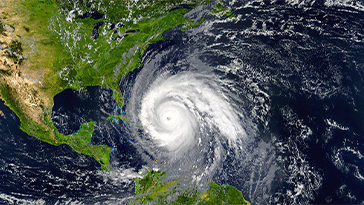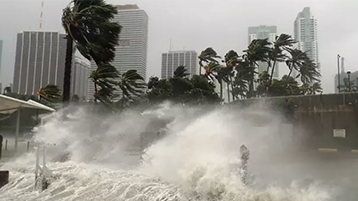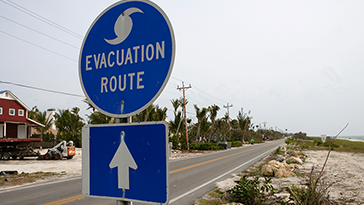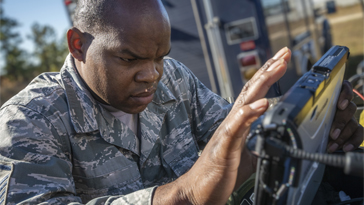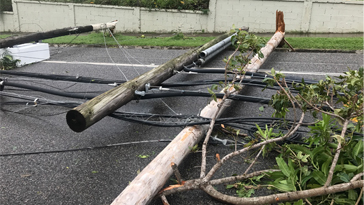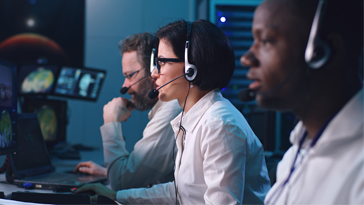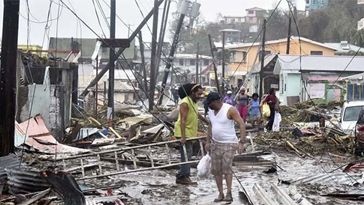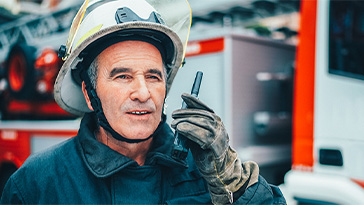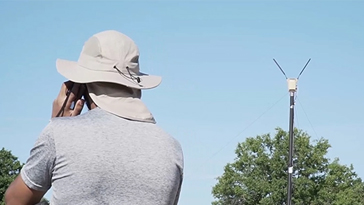Reliable Emergency Communications Systems
Satellite communication helps government responders and business owners in disaster management and emergency response.
Two-way emergency communication is critical to the execution of a disaster response plan. Deploying emergency communications needs to be simple and fast. The first 24 hours of the response plan are the most vital and chaotic. Storms, fires, earthquakes, floods, and other natural disasters will likely disrupt ground-based connections, including cell phone towers. With a mobile generator and a satellite terminal, you can quickly and easily bring internet connectivity and telephone service to first responders and citizens.
Businesses need emergency communications as part of their disaster recovery plan. Home improvement stores, insurance agents, medical facilities, and others benefit from emergency satellite communications.
A complete disaster communication plan will include VoIP telephones and Wi-Fi access points to extend the reach of communication and information access. With emergency satellite communications, people can get information and provide accurate updates on the situation.
Preparing an emergency communication system and providing emergency internet access.
The internet is a valuable tool in everyday life. When a natural disaster strikes or emergencies happen, access to the internet is critical. Government agencies, businesses, and community members will depend on emergency internet access to communicate with first responders and with loved ones.
An emergency communication system should include portable power, such as a gas-powered generator, and internet connectivity that doesn’t depend on ground-based service. Satellite communication is ideal because it is not dependent on infrastructures such as buried cables and cell towers that might be disabled during a natural disaster. It is also quick to set up in remote locations where wired or cellular connectivity is unavailable.
After establishing an internet connection, connect a Wi-Fi access point and VoIP telephones, and access is available for emergency response teams and those impacted by the event.

Versatile Satellite Terminals
For fast connectivity during emergencies, Hughes offers a range of satellite terminals that are small enough and rugged enough for the harshest disaster zones. Equipment can be pre-ordered and pre-staged ahead of severe weather for the fastest connections or ordered as needed for longer deployments. Find out more about our BGAN Mobile Satellite Terminals, our industry-leading JUPITER™ System and our HM System with low Size, Weight and Power (SWaP) for military applications.
Resilient Backup Networks
For organizations of every size, a backup network plan is as essential as a business plan. We offer a variety of network redundancy options to ensure secondary and tertiary back-up across single- and multi-transport broadband and SD-WAN deployments. Consider high-throughput Geostationary or Low Earth Orbit (LEO) broadband to back up your enterprise network connectivity at every site. Hughesnet Internet Continuity keeps small business sites up when cable and fiber internet go down.
Single Site Emergency Comms
For small businesses, state and local agencies and organizations that need occasional emergency connectivity on a site-by-site basis, Hughesnet® offers a turnkey solution.
- Access in an instant: Quickly and easily turn on the internet anywhere
- Scalable: Ideal for acute-need single sites like mobile field stations, medical centers or government offices
- Device ready: Built-in Wi-Fi makes it easy for workers and citizens to connect without the need for special devices
- Comms are up, even if lines are down: A variety of fixed and portable antennas enable service anywhere
- Available on the GSA and NASPO contracts or pay by credit card
Call 1-844-817-5287 for emergency service
Portable, Satellite-enabled Cell Service
For emergency military response, NGO deployments and remote medical sites, Hughes SatCell Connect powers a cellular ‘bubble’ with satellite backhaul.
- Emergency ready: Ideal for bringing instant cellular connectivity to the emergency zone
- Two-way service: Continues to operate two-way communications when cellular and voice systems are down
- Simple set up: Turnkey, ultra-portable, commercial-grade, cellular network-in-a-box comes with 4G/LTE/Pre-5G Cellular Pack and Portable Ku-band Antenna with integrated modem
- Supports multiple devices: Register hundreds of cellular devices and stream up to 100 simultaneous video calls; 400 simultaneous voice calls; or 800 simultaneous chat sessions with data rates up to 200 Mbps
- Easy to procure on the Government-wide Acquisition Contract (GWAC NASA SEWP V) under the Hughes catalog
Don’t wait until disaster strikes! Contact Hughes today to pre-plan, pre-order and pre-stage your emergency communications equipment so you can keep your personnel, first responders, dispatch centers and citizens connected.
Related Resources

